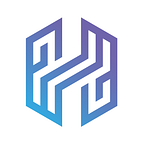3 School Strategies To Put Students At The Center
There’s a lot of talk lately around the future of education. With many leaning into hybrid learning due to the pandemic, new considerations for best practice in education have more recently come to light. What these practices share is they put students at the center of their learning. A host of schools, whether project-based, personalized, agile, or student-led, meet students where they are and consider their holistic well-being as ongoing practice. To support student autonomy and self-direction isn’t easy; this requires a holistic systems change which can’t be achieved in isolation. A number of future-forward schools and organizations reveal how they support thriving, learner-centered communities and identify three distinguishers that set them apart in innovative practice.
Staff Participatory Leadership
Joshua Robinson is a visionary principal at Pine Meadow Academy. As a Big Picture Learning Affiliate School, Robinson acknowledges the community as “a democracy” and “a government that works”, where there is a pervasive sense of shared ownership. Robinson says their participatory leadership model is “constantly evolving as everyone is making on the ground decisions and every teacher is a leader in their own right.” As educators model this sense of shared ownership to students, a learning culture develops toward ongoing improvement and life-long learning. This flattening of the hierarchy is gaining momentum within the Teacher-Powered Schools network, where 150+ public schools spanning 20+ states have joined the movement. In this model, teachers have collective autonomy to make the decisions influencing the success of a school, project, or professional endeavor. This allows for direct decision making that benefits students on the ground in real-time.
As part of the teacher-powered network, Avalon School is recognized for their agency-driven community and models best practice in participatory leadership, project-based learning, and competency-based development. An Avalon parent testifies, “This school is one of the hidden gems of the Twin Cities. It deserves attention. This is a groundbreaking school that changes people’s lives.” Tim Quealy, an educational leader from Avalon School states, “We are much more decentralized than a traditional model and a lot more flexible. This flexibility also allows us to play to the strengths of our teaching staff, which results in a 97%, year-to-year, staff retention rate.” Students are direct beneficiaries of the practice of staff participatory leadership.
Leaving to Learn
At the very heart of the Big Picture Learning (BPL) philosophy lies the notion, “Leaving to Learn”; in order to transform learning for today’s adolescents, schools must offer real-world experiences where students connect with opportunities outside of the classroom. Noteworthy schools have integrated this practice for years with results similar to recent Big Picture Learning (BPL) School Longitudinal Study, showing “74% of BPL alumni who are working, and not enrolled in post high school education, report securing a job through a contact made through one of their high school internships.” Commitment to tap into the community clearly pays off. Similarly, Project ARC is reinventing educator professional development to focus on authentic project learning experiences in a work-to-learn ecosystem. They support schools in building asset inventories and community maps to best leverage the expertise and capacities of local and global technical experts. This network alignment connects students with the real-world and is game-changer for those who tap into a diverse pool of experience and expertise outside their four walls.
Jenn Beal, Director of Education at Jobs for America’s Graduates (JAG), attributes their national success to the incredible network of partners they’ve collected to help students land scholarships, internships, and job placements. The JAG Advantage has three components that contribute to their best practice: Project-Based Learning, Trauma-Informed Care, and Employer Engagement. In emphasizing a systems-shift to focus on employer engagement, JAG graduates are 2.3 times more likely to be employed full-time compared to the average 18 to 20 year old. They do this by engaging professionals in local communities to be a part of the project process — introducing career pathways and exposing participants industries and occupations that align to their interests. Ultimately, JAG encourages all students to gain experience in their pathway of choice through an internship, volunteer experience, summer employment or apprenticeship before graduation.
Social-Emotional Learning
Robinson reveals the impact of social-emotional learning at Pine Meadows. In implementing the RULER method by Marc Brackett, research psychologist and the Founding Director of the Yale Center for Emotional Intelligence, they have tried, tested, and proved, “emotions matter.” RULER, an acronym for the five skills of emotional intelligence (recognizing, understanding, labeling, expressing, and regulating) is the evidence-based approach to social and emotional learning. At schools like Pine Meadow, RULER fosters a range of behaviors and shifts in school climate that are essential to positive youth development. Robinson says students “learn how to regulate better and bring this self-awareness into the workplace, which is much more valuable than students taking core classes they will never, ever use.” Harvard’s Explore SEL work also navigates the complex field of social and emotional learning, and states “Researchers, educators, employers, and parents agree that social and emotional learning (SEL) and non-academic skills matter for success in school and life.” Research supports the urgency for greater implementation of SEL in educational practice and policy.
To put students at the center of their learning requires much more than a personalized approach in the classroom. Personalization expands beyond academic work and involves reworking leadership structures, scaffolding real-world experiences for students, and measuring student development holistically. As more consider making these transformations, there are many places and people to look for field tested inspiration.
HEADRUSH facilitates project-based learning from START to FINISH allowing students to become self-empowered learners, teachers to focus on mentoring great work and schools to be future-ready. Our Heroes of PBL series highlights individuals and organizations that are brave enough to break the mold of traditional education and are making a difference in the world of project-based learning. Join our community as we enhance dialog to support deeper learning. For more, follow @headrushapp on Twitter or visit us at https://headrushlearning.com.
